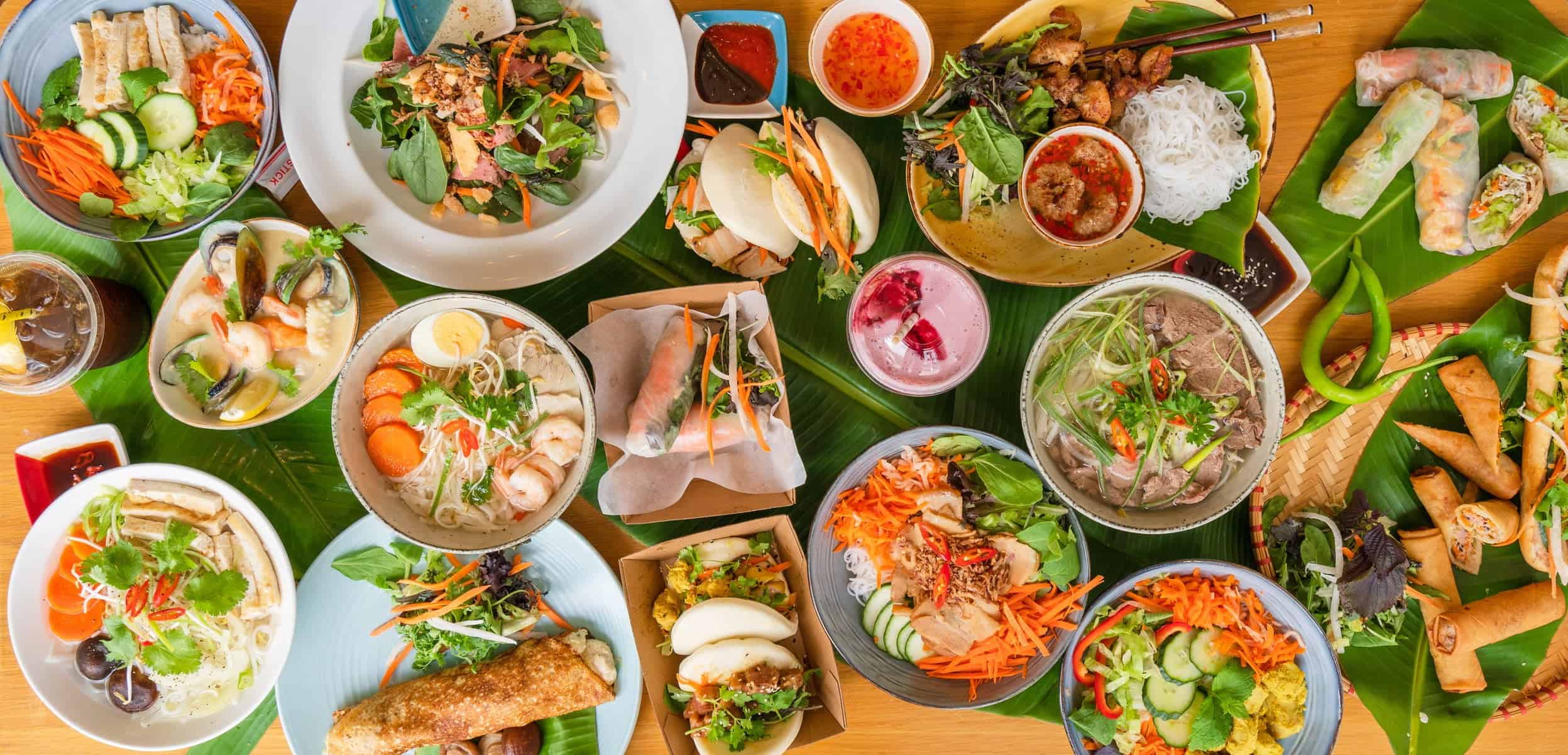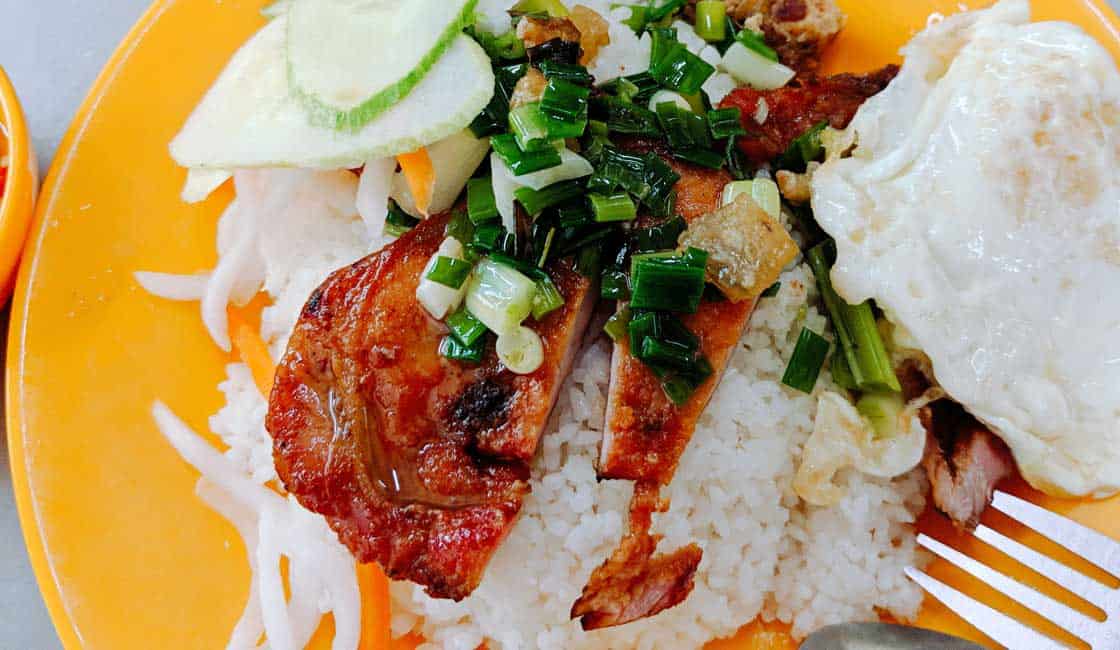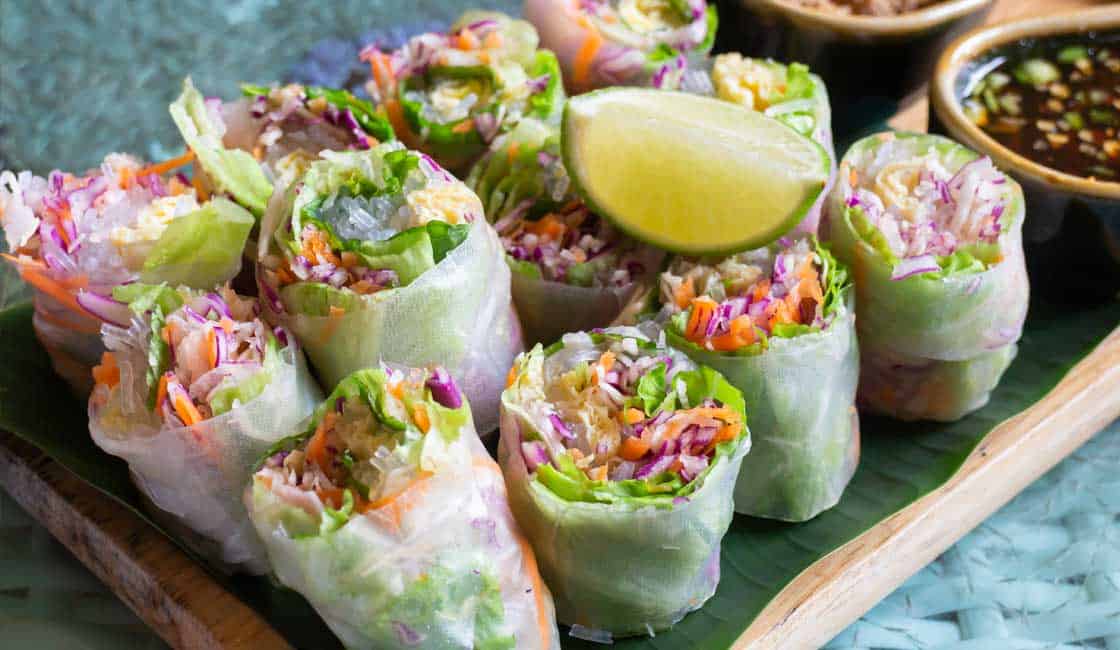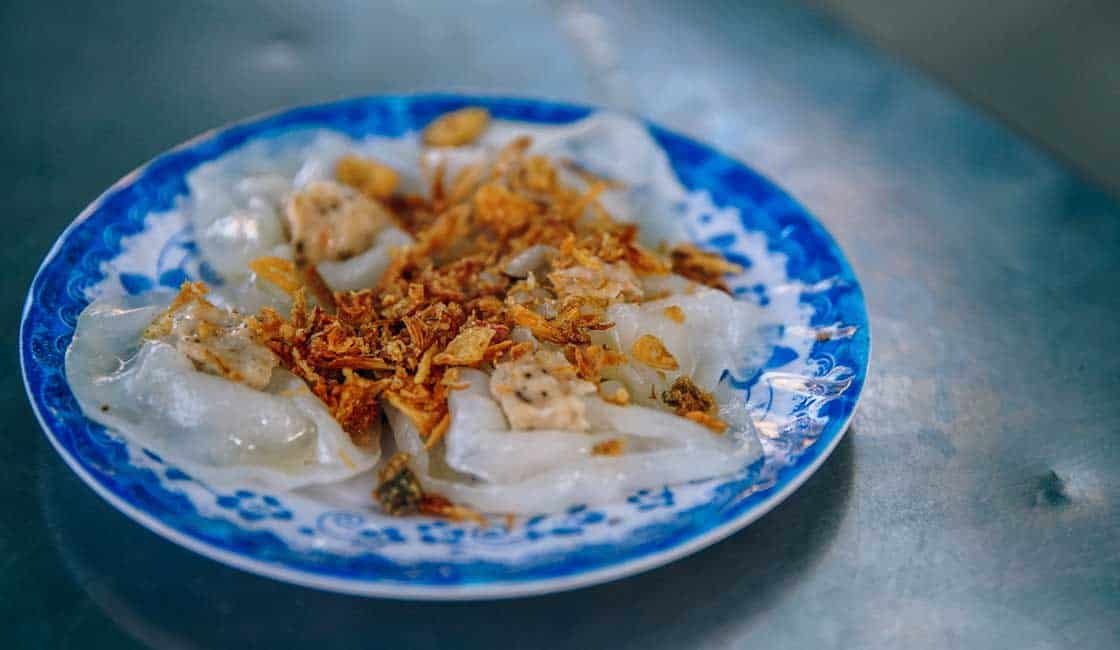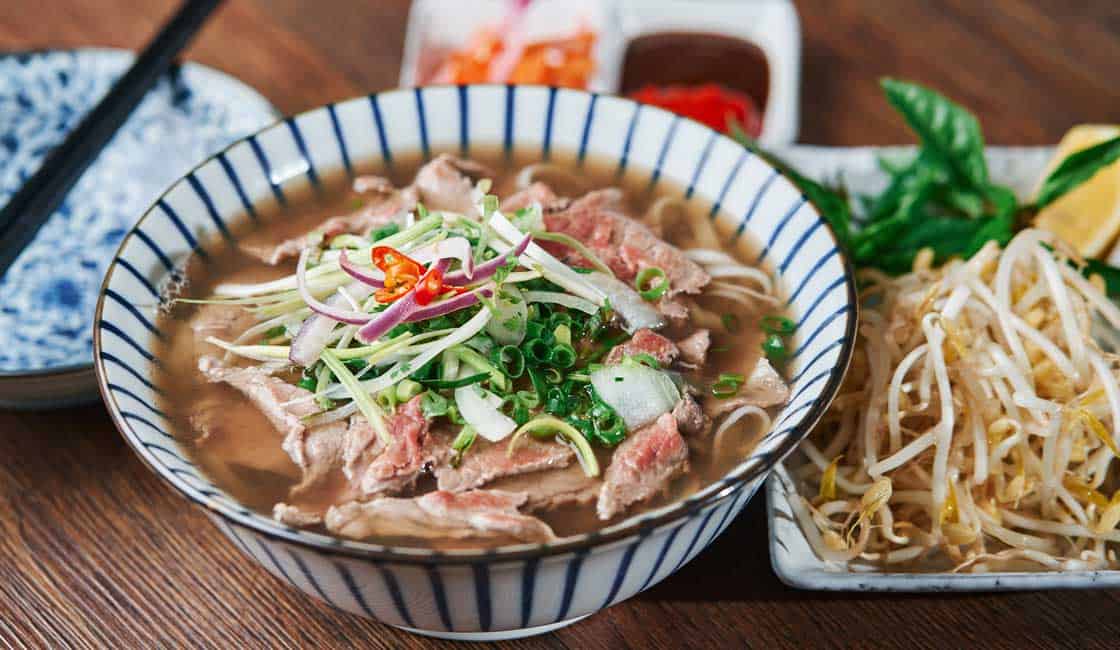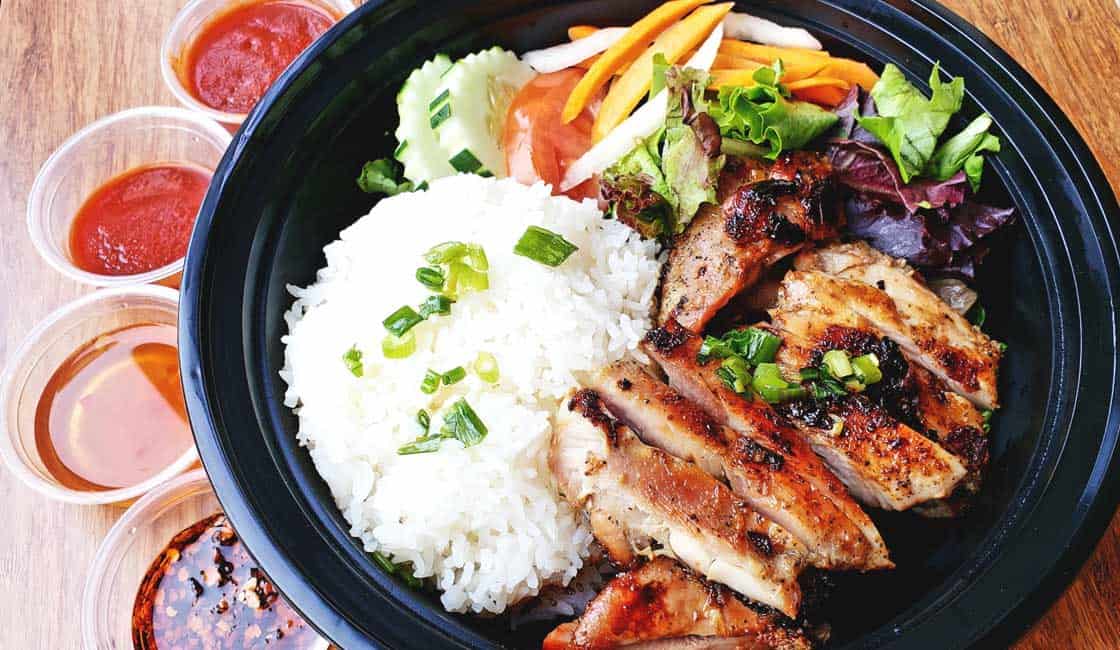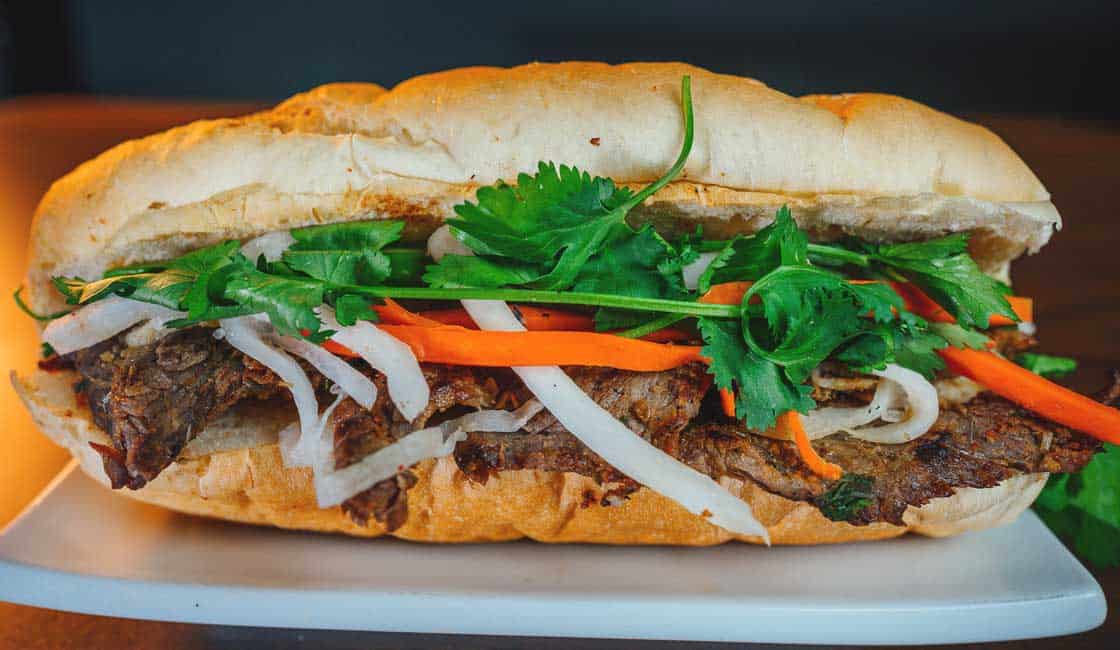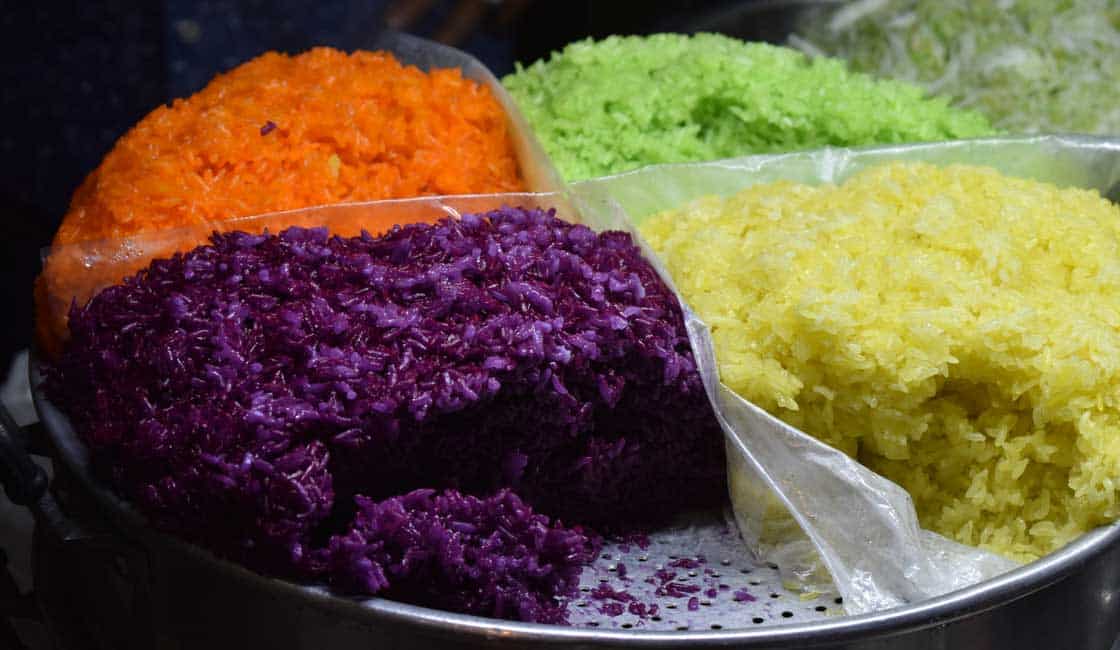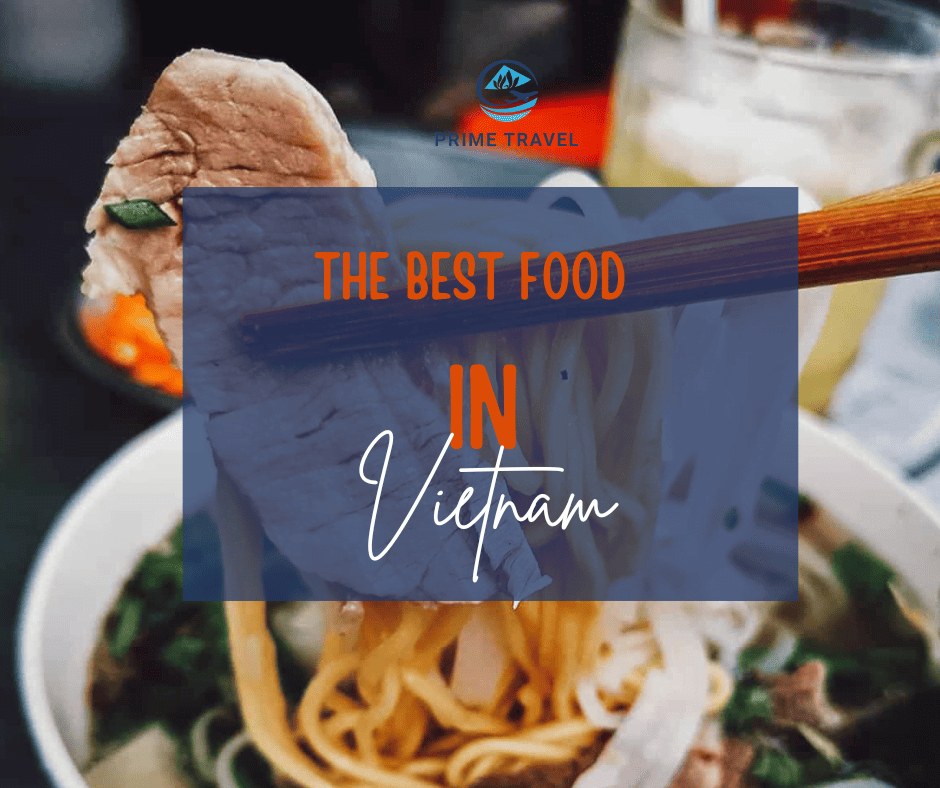
9 Traditional Dishes In Vietnam You Must Eat
It’s not just the internal regional differences either that have affected ‘tradition’, neighbors, and colonizers, have also had a significant impact. From the Chinese Dynasties who brought noodles to the people of Vietnam, to the arrival of the French in the 1800s, which saw additional influences hit Vietnamese cuisine. One is certain – discovering local food adds greatly to your Vietnemese adventures.
So where do we begin when talking about traditional Vietnamese dishes? Well, we asked some close friends of ours about their favorite dishes, figuring it was perhaps best to ask the locals what to eat in Vietnam. So here is the list, in no particular order – you just need to try them all!
1. Bún bò Huế
It might be the best-known Vietnamese dish worldwide. This wonderfully meaty, noodle dish comes from the former capital of Vietnam, Huế in the center of Vietnam. It’s made with rice vermicelli, thinly sliced beef (bò) in a beef broth and it’s all married together with the distinct aromatic flavors of lemongrass and fermented shrimp paste.
It’s normally served with an abundance of lime wedges, diced spring onions, several different local salad/vegetable leaves, cilantro, and chili sauce that you can add to your soup to taste.
2. Cơm tấm – Broken Rice
Perhaps one of the most recognizable signs you will see dotted around the major city of Saigon. You will find ‘Cơm tấm’ signs on street food carts and local restaurants all over the place.
Traditionally a food that grew out of poverty in the Mekong Delta, broken rice was seen as inferior to whole grains and is a result of poor handling during the farming process. These broken grains could not be sold and were eaten by farmers not wishing to waste a valuable commodity.
In the early days, the dish was not much more than just that, cooked broken grains of rice. However, as Vietnam has developed, so too has the dish, with the addition of various proteins like grilled pork and a minced pork and mushroom meatloaf topped with omelet known as Chả Trứng Hấp.
Extra Tips
You can call it Chả in general at Cơm Tấm restaurants. Hấp = steamed, Trứng = egg. Chả Trứng Hấp describes exactly what it is, but at the Cơm Tấm stall, you just need to say Chả, and people will understand what you mean.
Most of the time it is also served with a sunny-side-up egg, pickled thinly sliced carrots and radish, freshly sliced cucumbers and tomato, and of course some sweet and spicy fish sauce Nước mắm pha is served on the side.
Cơm tấm in Saigon, also comes with a little break from tradition, as some restaurants seek to elevate the dish, substituting local pork with the famous Spanish Iberico Pork and other premium ingredients.
3. Gỏi cuốn (South) or Nem cuốn (North)
Fresh Spring Rolls or Summer Rolls (Try making them yourself)
No list of food to try in Vietnam would be complete without the inclusion of nearly everyone’s favorite; fresh spring rolls. A refreshing alternative to the fried spring rolls or egg rolls we might be more accustomed to in the United States.
Made with bánh tráng (rice paper) which is first lightly soaked with water, then fresh ingredients are laid on top before being rolled up and dipped in the accompanying sauce. Often, they are served pre-rolled to your table, but in some restaurants or indeed if you are lucky enough to be invited to somebody’s home, it can be an enjoyable experience to find them served in a ‘do it yourself’ way when all the ingredients are served separately.
Your friends or guide will waste no time, in showing you how to make the perfect roll, layering up ingredients in flawless harmony before teaching you the ultimate rolling technique! The main fillings in this dish include grilled pork or prawns (although many other protein variants exist such as squid, sausage, and tofu, etc.), cold vermicelli noodles, and vegetables.
They can be seen served with various sauces such as Hoisin Sauce, peanut sauce, and indeed fish sauce. Normally Spring Rolls are served as an appetizer to share amongst friends before the main dishes arrive.
4. Bánh cuốn
Filled Rice Batter Pancakes
Tastes much better than it looks
This is another interesting dish to try and can be found on many a street corner, but also in some of the fanciest Vietnamese restaurants in town. Originating in the north of Vietnam, it is a joy to watch the street sellers at work, producing these little bundles of joy.
Starting with fermented rice batter, much in the same way a Frenchman will make crepes on a hot plate, the batter is poured onto a round stretched piece of cloth over a big pan of boiling water and spread into a perfect circle. A lid is added to create steam to cook it quickly.
Once cooked they are filled with cooked seasoned minced pork, finely chopped wood ear mushroom, and fried shallots, which are then rolled and often cut into bite-sized pieces. It’s served with fish sauce as a dipping sauce and occasionally some fresh vegetables like bean sprouts and then topped with more golden fried shallots. As with the fresh spring rolls, these are more for sharing as an appetizer but are a little more filling and so can be served as a main dish too.
5. Phở
Noodle soup (Always amazing)
OK, it’s time to get serious. One of the 2 most famous dishes to come out of Vietnam, is the mighty bowl of Phở! Perhaps the most controversial too, as it is widely argued that this is one of those French-influenced dishes mentioned earlier.
Whilst it’s no argument the noodles are true of Chinese origin, the soup or broth part is more arguable. Could it be a true fusion of East meets West? Chinese noodles, French Soup, and Vietnamese herbs and spices? It is said the word Phở comes from the French ‘pot-au-feu’ which means ‘pot in the fire’ and is made much in the same way as its Vietnamese counterpart. ‘Phở’ pronounced correctly also sounds like the French word ‘feu’.
The soup base is a light broth, made by simmering beef bones and vegetables, and spices for hours, before being strained and used as a starting point to which the other ingredients are added. For tips on where to find the best Phở, check out our post on Vietnamese Street Food.
How long do they cook the broth?
It’s hard to say, some say 10 hours is enough, whilst some restaurants are known to keep it simmering indefinitely; adding new bones daily and simply skimming the top of the soup and removing old bones.
The other main component is rice noodles, which can be found just beneath the surface. Normally it comes with some form of beef and plenty of vegetables and chopped scallions. On the side, as with Bún bò Huế, a mountain of vegetation, chilis, lime wedges, and chili sauce are served. There are so many variations of this dish and oh so many restaurants and vendors, everyone has their personal favorites.
6. Bún thịt nướng
Cold Vermicelli Noodles Topped With Grilled Pork (Somehow they make it delicious)
Found nearly everywhere in Vietnam, except for Hanoi (where they prefer a similar dish called bun cha), Bún thịt nướng is made with a bed of cold rice vermicelli topped with marinated grilled pork, finely chopped lettuce, pickled vegetables, and often (but not always) deep-fried pork and shrimp spring rolls. Often you will find it topped with chopped peanuts and fried shallots and fresh herbs like basil and mint. On the side, it is served with fish sauce.
When eating, it is recommended that you pour the fish sauce on to taste and mix all the ingredients, before devouring every last mouthful using your trusty chopsticks!
8. Banh mi
Filled Baguette (Meat or vege options available)
Now for the next of the top 2 famous Vietnamese dishes to come from Vietnam, although this time, there is little question as to the influences/origins of the dish. The French brought with them the trusty baguette, they made sandwiches with them. The Vietnamese then showed them how to make real sandwiches, with superb local ingredients!
Like Phở, there are indeed many variants and everyone has their favorites. In Vietnam, you can spend as little as a few cents on a Bánh mì or you can really splash out and even find a mighty 100 dollar version in the heart of Saigon. Generally, you will find a Bánh mì filled with, pâté, various meats such as pork sausage, cilantro, pickled vegetables, and even mayo. Vegetarian options such as fried tofu, fish options, and various incarnations are available everywhere you go.
9. Xôi
Glutinous Rice or Sticky Rice (Surprisingly tasty with coconut flakes and coconut milk on top)
Finally, a well-known staple in Vietnamese diets, that comes from the more mountainous areas of Vietnam. Xôi has found its way into virtually every town and city across the country. Often eaten for breakfast, there are so many different versions of this dish it’s quite hard to keep up.
With over 20 sweet versions made with things like coconut milk, mung beans, and even the dreaded durian, the dessert options are almost endless for this sticky/glutinous rice dish. On the savory side, there are perhaps around 10 to 15 options. Whichever way you go, you will be sure to find satisfaction to keep you going until lunchtime!
With so many interesting dishes to try in Vietnam, this list of 9 Typical Dishes You Need To Try is more of a beginner’s guide, allowing you to explore the more common dishes, more suited to Western palates, which are eaten by the majority of Vietnamese people on a daily or weekly basis.
There are, of course, far more adventurous and shocking dishes to try also such as Balut (Trứng vịt lộn), which is a fertilized duck embryo that is steamed whilst still in its shell, but they are not for the faint of heart!
Whether visiting the highlands of central Vietnam, the rice fields of Sapa, or the wetlands of the Mekong Delta, there is one thing you can be sure of – Vietnam is most definitely one country in Asia, where you will never go hungry.
Disclaimer
Prime Travel Vietnam aims to provide accurate and up-to-date information, we make no representations as to the accuracy or completeness of any information herein or found by following any link on this site. Prime Travel Vietnam cannot and will not accept responsibility for any omissions or inaccuracies, or for any consequences arising therefrom, including any losses, injuries, or damages resulting from the display or use of this information.
According to: Rainforestcruises.com

